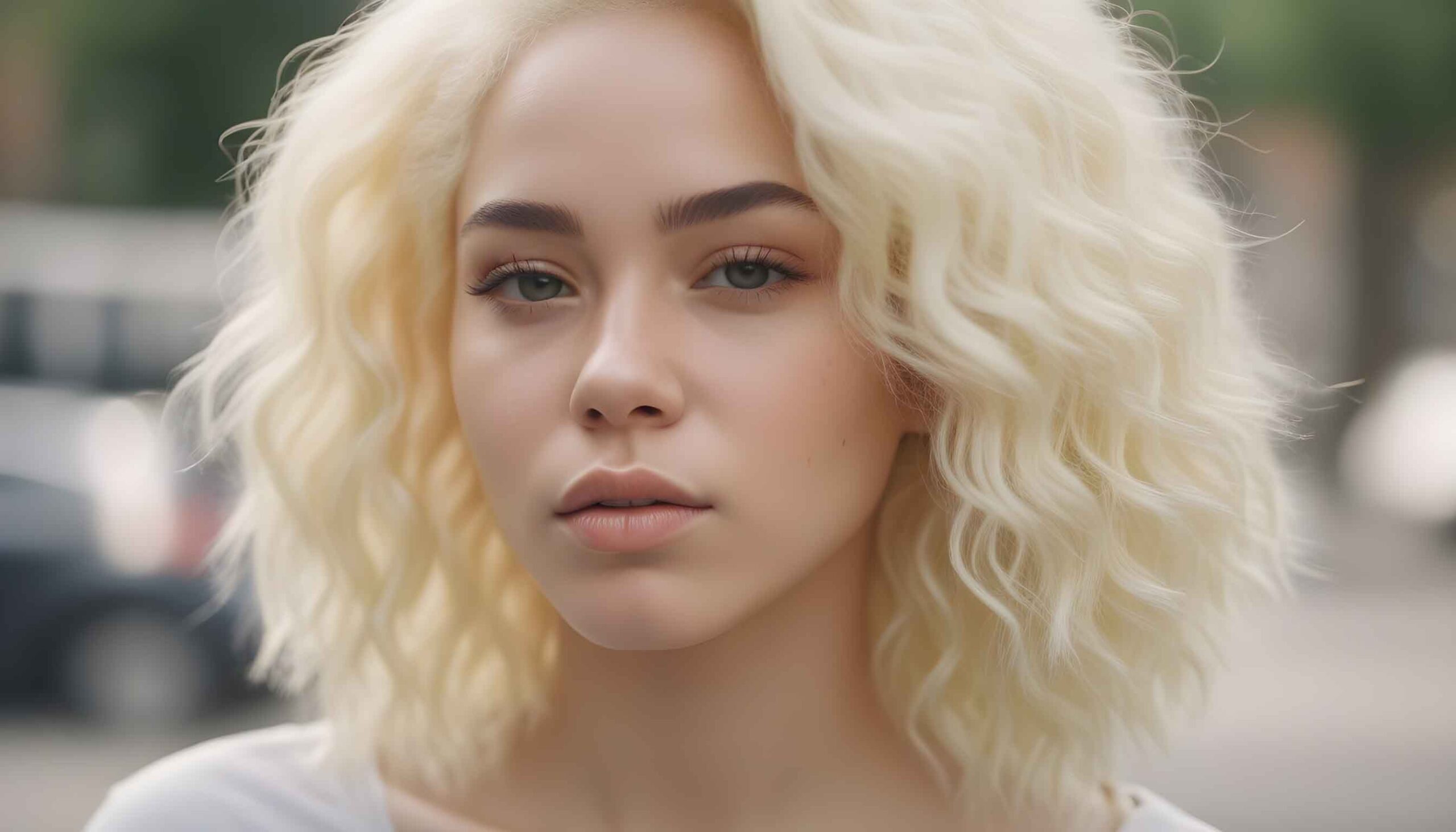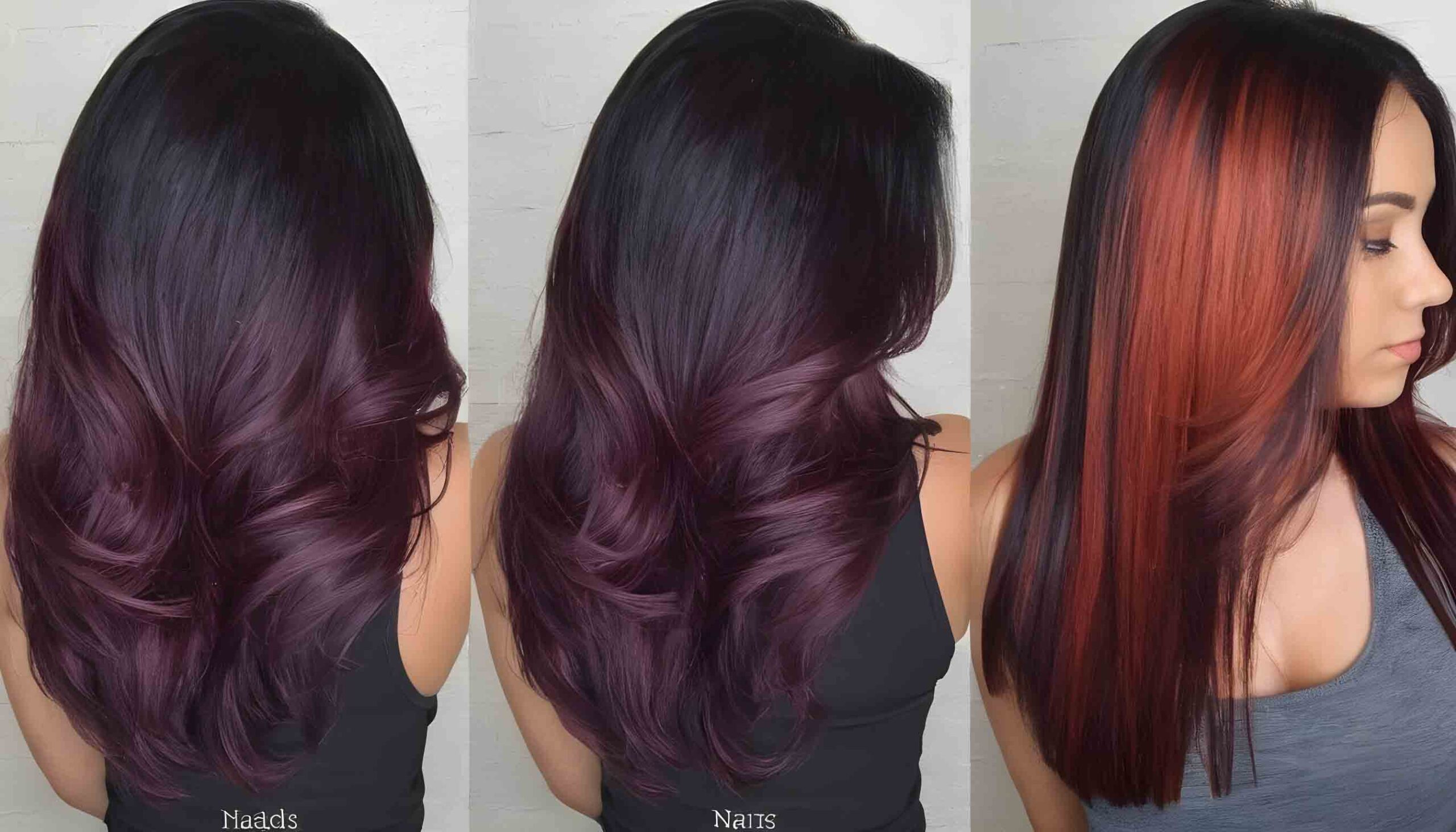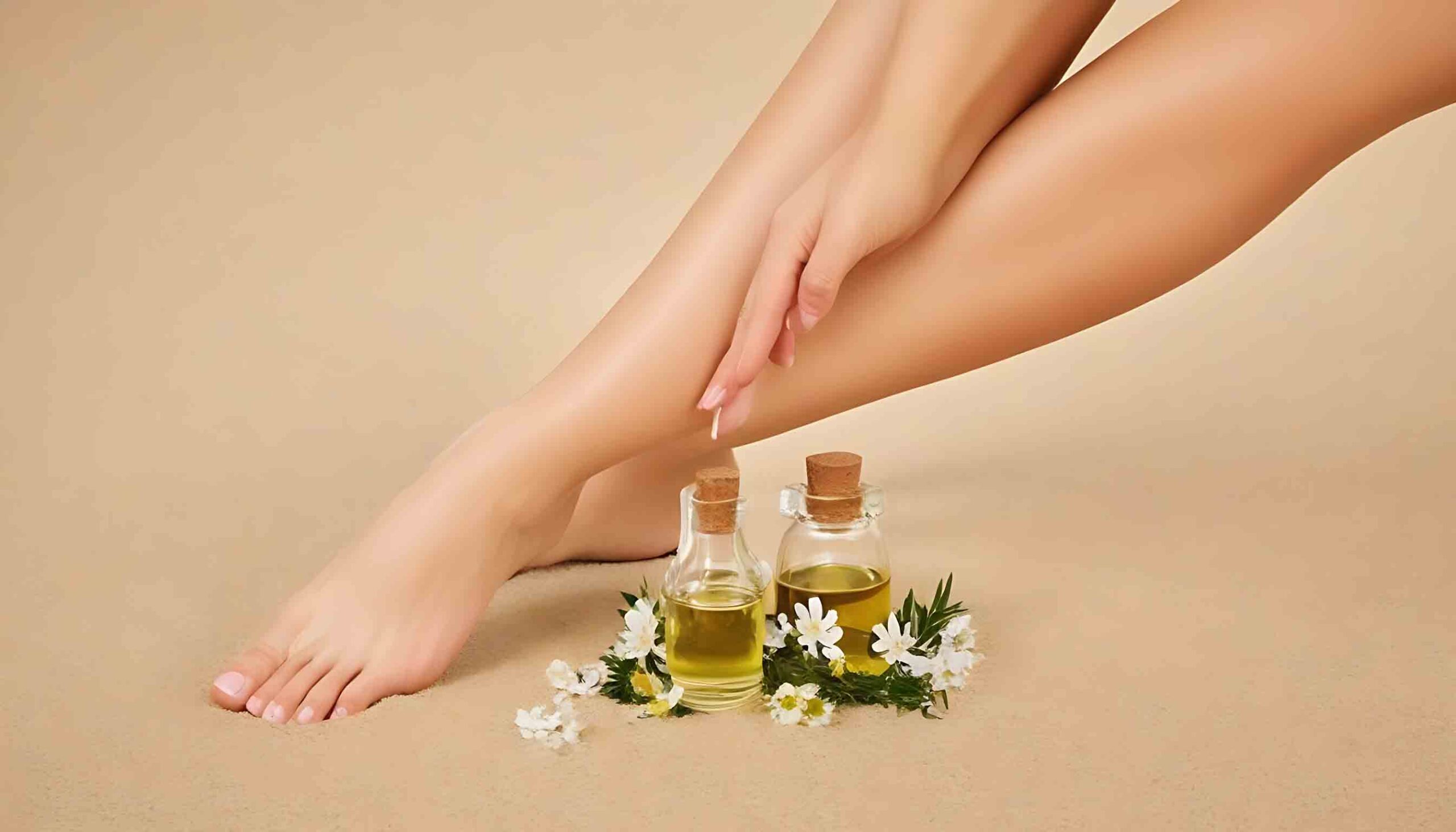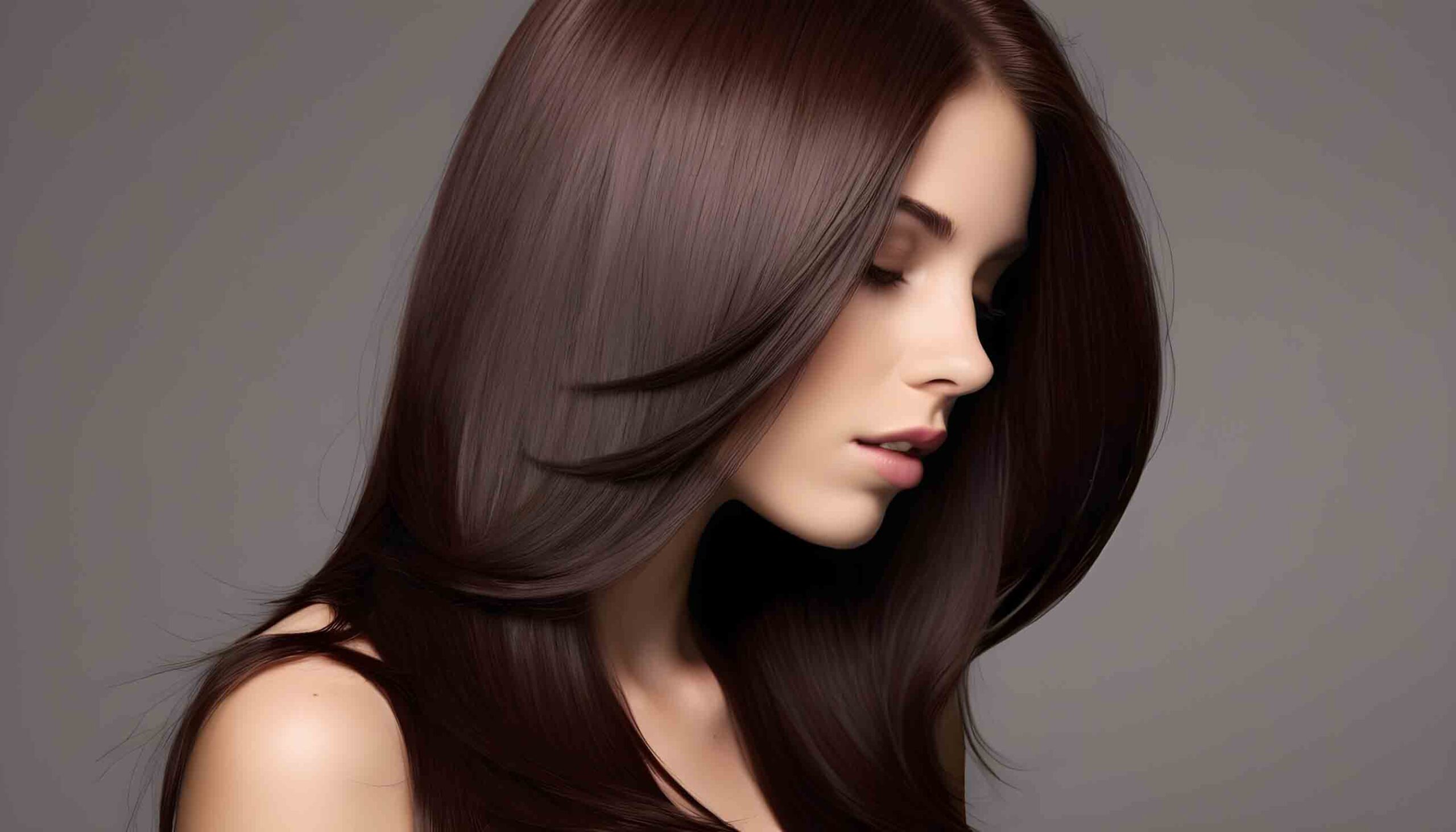Bleaching is a popular way to dramatically lighten natural hair and achieve lighter colors like platinum blonde. However, bleach is extremely harsh and damaging when used incorrectly. Proper technique is crucial to lift hair safely with minimal breakage. Here are the keys when Bleaching Natural Hair Dos and Donts.
Introduction to Bleaching Natural Hair
Bleaching natural hair is a transformative process that allows individuals to achieve their desired hair color, whether it’s a vibrant blonde, a striking red, or a trendy pastel shade. However, this chemical treatment comes with its own set of risks and considerations. In this comprehensive guide, we will explore everything you need to know about bleaching natural hair, including dos and don’ts, precautions, and long-term maintenance tips.
Understanding the Risks Associated with Bleaching
Before delving into the bleaching process, it’s crucial to understand the potential risks involved. Bleaching involves the use of strong chemicals, typically hydrogen peroxide, to strip the hair of its natural pigment. This process can weaken the hair cuticle, leading to dryness, breakage, and overall damage. Additionally, bleaching can affect the scalp, causing irritation and sensitivity. It’s essential to weigh these risks carefully and take necessary precautions before proceeding with bleaching.
Dos and Don’ts Before Bleaching Natural Hair
Preparing your hair properly before bleaching is key to achieving optimal results while minimizing damage. Dos include deep conditioning treatments to strengthen the hair, conducting a strand test to assess how your hair will react to bleach, and avoiding any chemical treatments or heat styling in the weeks leading up to bleaching. Don’t include bleaching hair that is already damaged or compromised, skipping the strand test, and washing your hair immediately before bleaching, as natural oils can provide a protective barrier.
Bleaching Natural Hair: Essential Haircare Tips
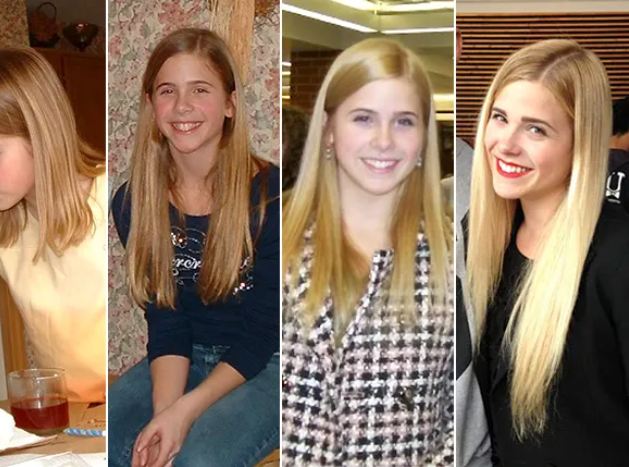
Bleaching natural hair can be a transformative process, but it requires careful attention to haircare to maintain its health and vitality. Proper haircare routines are essential before, during, and after bleaching to minimize damage and achieve optimal results. Before bleaching, it’s crucial to assess hair health and ensure that the hair is adequately nourished and hydrated.
During the bleaching process, using protective measures such as gloves and applying bleach evenly can help prevent damage to the hair follicles and roots. After bleaching, deep conditioning treatments and moisturizing products are vital to replenish moisture and restore the hair’s health. Incorporating these haircare practices into your routine can help protect against damage and keep your bleached hair looking its best. Remember to follow expert tips and guidelines for maintaining bleached hair to ensure long-term hair health and vibrancy.
Bleaching Natural Hair: Essential Haircare Guidelines
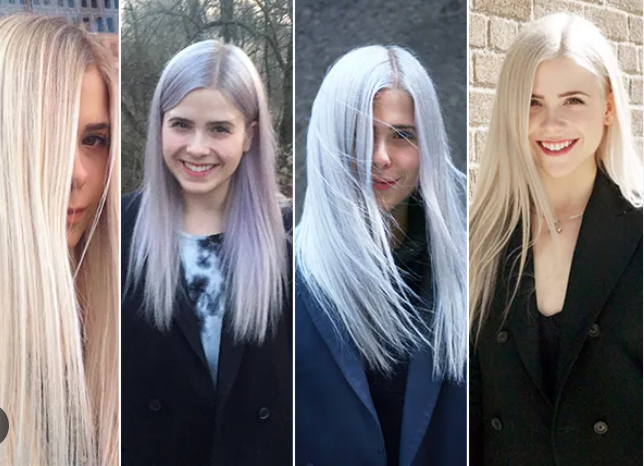
When considering bleaching natural hair, it’s crucial to prioritize proper hair care to ensure the health and integrity of your locks. Bleaching involves using bleach or hair dye to lighten the hair’s natural color, which can lead to potential damage if not done correctly. To maintain optimal hair health during and after the bleaching process, it’s essential to follow a comprehensive haircare routine.
This routine should include regular deep conditioning treatments to nourish and hydrate the hair, as well as using protective products to minimize damage and breakage. Additionally, incorporating haircare tips such as avoiding excessive heat styling, using sulfate-free shampoos and conditioners, and protecting the hair from environmental stressors can help maintain hair health and vibrancy. By prioritizing haircare and following expert guidelines, you can achieve stunning bleached hair while keeping your locks looking and feeling their best.
Skin Bleaching Natural Remedies Effective Solutions
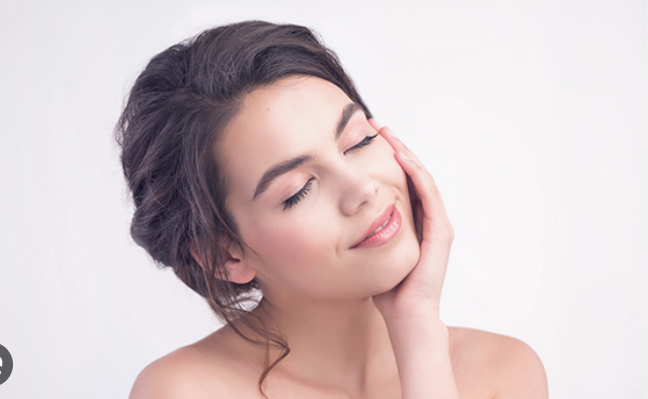
When seeking to lighten their skin tone, many individuals turn to natural remedies for a safer and gentler approach. Skin-bleaching natural remedies offer a holistic way to achieve a more even complexion without the use of harsh chemicals. These remedies often utilize natural ingredients such as lemon juice, yogurt, and turmeric, which are known for their skin-lightening properties. Lemon juice, for example, contains citric acid,
which can help to lighten dark spots and hyperpigmentation over time. Yogurt is rich in lactic acid, which exfoliates the skin and promotes cell turnover, leading to a brighter complexion. Turmeric, on the other hand, has anti-inflammatory properties and can help to reduce the appearance of scars and blemishes. By incorporating these natural remedies into your skincare routine, you can achieve a more radiant and even skin tone while avoiding the potential side effects of harsh chemical bleaching agents.
Skin Bleaching Natural Products A Gentle Approach
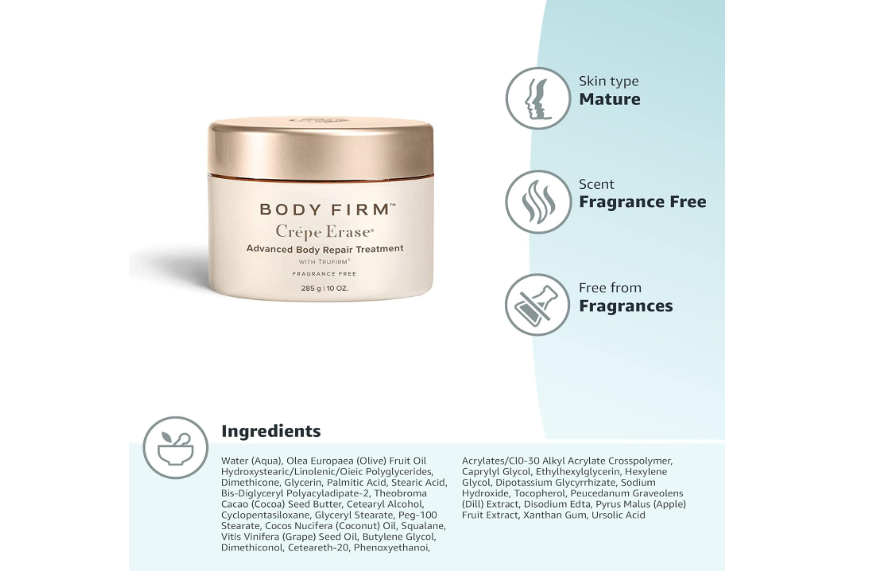
When it comes to lightening the skin tone, many individuals prefer to opt for natural products over harsh chemical bleaching agents. Skin-bleaching natural products offer a gentler approach to achieving a more even complexion without causing damage or irritation. These products often contain ingredients derived from nature, such as kojic acid, licorice extract, and vitamin C, which are known for their skin-lightening properties. Kojic acid, for example, inhibits the production of melanin in the skin, leading to a lighter and brighter complexion over time.
Licorice extract contains glabridin, which helps to reduce hyperpigmentation and even out skin tone. Vitamin C is a powerful antioxidant that can help to brighten the skin and protect against environmental damage. By incorporating these natural products into your skincare routine, you can achieve a more radiant and uniform complexion while nourishing and protecting your skin.
Assessing Hair Health Prior to Bleaching
Assessing the health of your hair before bleaching is essential to minimize damage and achieve the desired results. Factors to consider include hair porosity, elasticity, and overall condition. High-porosity hair may require extra care and attention during the bleaching process, while low-porosity hair may take longer to lighten. Additionally, it’s crucial to consider any previous damage or chemical treatments that may impact the bleaching process.
Choosing the Right Bleaching Products for Natural Hair
Selecting the right bleaching products is crucial for achieving safe and effective results. Look for products specifically formulated for natural hair and consider factors such as the strength of the bleach, the presence of conditioning agents, and any additional treatments included in the product. It’s also essential to follow the manufacturer’s instructions carefully and avoid using expired or outdated products.
Importance of Strand Testing Before Full Application
Strand testing is a crucial step in the bleaching process that allows you to assess how your hair will react to the bleach before applying it to your entire head. To perform a strand test, mix a small amount of bleach according to the manufacturer’s instructions and apply it to a small section of hair. Monitor the bleaching progress closely and note the time it takes to achieve your desired level of lightness. This will help you determine the appropriate processing time for your full application.
Dos and Don’ts During the Bleaching Process
During the bleaching process, it’s essential to follow best practices to minimize damage and achieve even results. Dos include applying bleach evenly to all sections of hair, using protective gloves and goggles to avoid skin and eye irritation, and monitoring the bleaching progress closely to prevent over-processing. Don’t include leaving the bleach on for longer than recommended, overlapping previously bleached sections, and applying heat to speed up the processing time, as this can cause the bleach to work too quickly and result in uneven lightening.
Proper Application Techniques for Even Results
Proper application techniques are crucial for achieving even results when bleaching natural hair. Begin by sectioning the hair into manageable sections and applying bleach to the roots first, as they tend to lighten more quickly than the rest of the hair. Work quickly and methodically, ensuring that each section is fully saturated with bleach. Use a brush or applicator bottle to apply the bleach evenly, and avoid rubbing or massaging it into the scalp, as this can irritate.
Monitoring Bleaching Progress and Timing
Monitoring the bleaching progress closely is essential to prevent over-processing and minimize damage. Check the hair regularly to assess the level of lightness and determine when to rinse out the bleach. Keep in mind that hair may lighten at different rates depending on factors such as hair color, texture, and porosity. It’s better to err on the side of caution and rinse out the bleach slightly earlier than to risk over-processing and causing damage.
Rinse and Neutralize: Essential Steps After Bleaching
After the bleaching process is complete, it’s crucial to rinse out the bleach thoroughly and neutralize any remaining residue. Use lukewarm water to rinse out the bleach until the water runs clear, then apply a neutralizing shampoo or conditioner to balance the pH of the hair and scalp. This will help prevent further damage and irritation and prepare the hair for any additional treatments or styling.
Dos and Don’ts for Post-Bleaching Hair Care
Proper post-bleaching hair care is essential for maintaining the health and integrity of your hair. Dos include deep conditioning treatments to restore moisture and nourishment, using protein treatments to strengthen the hair, and avoiding heat styling and chemical treatments until the hair has fully recovered. Don’t include washing your hair too frequently, using harsh or stripping shampoos, and exposing your hair to excessive heat or sunlight, as this can cause further damage.
Moisturizing and Conditioning Strategies for Bleached Hair
Bleached hair tends to be dry and brittle, so it’s essential to prioritize moisture and hydration in your hair care routine. Use a hydrating shampoo and conditioner specifically formulated for bleached hair, and incorporate weekly deep conditioning treatments to replenish moisture and nourishment. Consider using leave-in conditioners, hair oils, or serums to provide additional hydration and protection.
Limiting Heat Styling and Chemical Treatments
Excessive heat styling and chemical treatments can further damage bleached hair, so it’s essential to limit their use as much as possible. Avoid using high heat settings on styling tools such as blow dryers, flat irons, and curling wands, and opt for heat-protectant products when heat styling is necessary. Additionally, avoid chemical treatments such as perms, relaxers, or additional bleaching until the hair has fully recovered from the initial bleaching process.
Protecting Bleached Hair from Environmental Damage
Bleached hair is more susceptible to damage from environmental factors such as sun exposure, pollution, and harsh weather conditions. To protect your hair from these elements, consider wearing a hat or scarf when outdoors, and use UV-protectant hair products to shield your hair from the sun’s harmful rays. Additionally, avoid swimming in chlorinated pools or salt water, as these can further dry out and damage bleached hair.
Understanding the Impact of Bleaching on Natural Hair Texture
Bleaching can alter the texture of natural hair, making it more porous, brittle, and prone to breakage. It’s essential to understand how bleaching will affect your hair texture and adjust your hair care routine accordingly. Consider incorporating protein treatments to strengthen the hair, using lightweight moisturizers to prevent dryness, and avoiding harsh styling practices that can cause further damage.
Dos and Don’ts for Achieving Desired Hair Color
Achieving your desired hair color through bleaching requires careful planning and execution. Dos include consulting with a professional hairstylist or colorist to determine the best course of action, selecting the appropriate shade of bleach and developer for your hair color goals, and following the manufacturer’s instructions carefully. include bleaching hair that is already damaged or compromised, attempting drastic color changes in a single bleaching session, and applying bleach directly to the scalp without proper protection.
Managing Expectations and Potential Color Variations
It’s important to manage expectations when bleaching natural hair, as achieving certain hair colors may require multiple bleaching sessions and careful color correction. Different hair types and textures may also react differently to bleach, resulting in variations in color and tone. Communicate openly with your hairstylist or colorist about your desired outcome, and be prepared for potential color variations during the bleaching process.
Dealing with Potential Bleaching Side Effects
Bleaching natural hair can cause side effects such as dryness, breakage, and scalp irritation. If you experience any adverse reactions during or after the bleaching process, it’s essential to address them promptly. Use gentle, hydrating hair care products to restore moisture and nourishment to the hair, and avoid further chemical treatments or heat styling until the hair has fully recovered. If irritation persists, consult with a dermatologist or hair care professional for personalized advice and treatment options.
Seeking Professional Help When Necessary
While DIY hair bleaching can be convenient and cost-effective, it’s important to recognize when professional help may be necessary. If you’re unsure about how to bleach your hair safely or if you have specific concerns about your hair’s health or condition, consult with a licensed hairstylist or colorist. A professional can assess your hair’s needs, recommend appropriate treatments, and ensure that the bleaching process is carried out safely and effectively.
Long-Term Maintenance Tips for Bleached Natural Hair
Maintaining bleached natural hair requires ongoing care and attention to prevent damage and preserve color vibrancy. Incorporate regular deep conditioning treatments into your hair care routine to keep the hair hydrated and nourished, and minimize heat styling and chemical treatments to prevent further damage.
Consider using color-safe hair care products specifically formulated for bleached hair, and protect your hair from environmental damage by wearing hats or scarves outdoors. Additionally, schedule regular trims to remove split ends and keep the hair looking healthy and vibrant.
Carefully Evaluate Your Hair’s Base Color and Texture
Not all hair can withstand bleaching well. The lighter and smoother your natural hair, the better it will handle lightening. Dark, oily, or highly textured hair is far more vulnerable to damage when bleached.
Here is a guide to what hair types can be safely bleached:
| Hair Type | Bleach Suitability |
|---|---|
| Very dark brown to black | High risk of damage |
| Medium to light brown | Moderate risk of conditioned |
| Dark blonde to light blonde | Safest for bleaching |
| Type 4 coily | High risk of brutal damage |
| Type 3 curly | Type 4 coils |
| Type 2 wavy | Lower risk if done gradually |
| Type 1 straight | Safest texture for bleaching |
If your hair is dark, oily, or highly textured, reconsider bleaching or opt for highlights instead of full whitening.
Transition Hair Health First Before Full Bleaching
Never bleach hair that isn’t in optimal condition. Bleach on already-damaged hair causes devastating breakage.
Transition hair through these steps before attempting full bleaching:
- Deep condition weekly with moisture masks to maximize hydration.
- Trim away split ends so they don’t worsen with lightning.
- Fortify with Olaplex or protein treatments to strengthen strands.
- Clarify to remove product buildup that impedes the lightener.
With hair in the healthiest state possible, it will withstand bleaching better.
Section Hair Appropriately for Full Coverage
Proper sectioning ensures the bleach penetrates every strand thoroughly and evenly. This prevents splotches or bands of unlifted hair.
Part clean, dry hair cleanly down the middle from forehead to nape. Then make two horizontal partings: one ear-to-ear over the crown, and another at the nape area.
Work on one section at a time, dividing hair from scalp to ends into 1-inch subsections. Secure the other sections so they stay out of the way.
Thorough sectioning leads to successfully and evenly bleached hair.
Protect Scalp and Skin from Irritation
Bleach can irritate and burn the scalp and skin if left on too long. Protect these areas by:
- Coating hairline, ears, and neck with petroleum jelly to block splattering bleach.
- Wearing a waterproof cape to keep clothes free of lightener.
- Working quickly and rinsing thoroughly when done to minimize skin contact.
Avoid scratching or disturbing the scalp after applying bleach. Rinse immediately if irritation occurs.
Mix Bleach Powder and Developer in a Non-Metal Bowl
The chemical reaction between bleach powder and the developer releases heat and oxygen bubbles. To allow this to happen safely:
- Select a glass, plastic, or ceramic bowl to mix in. Metal bowls can react with lighteners.
- Use a plastic applicator brush to avoid sparks and heat.
- Mix 1 part bleach powder with 2 parts developer. Add powder to liquid.
- Stir continuously until a smooth, lump-free, yogurt-like consistency forms.
Proper mixing produces even lightening and minimizes scalp irritation. Discard the leftover mixture after use.
Apply Lightener Off-Scalp First in a Painting Motion
Paint bleach onto mid-length and ends first before applying it to the scalp and roots. Off-scalp hair is more porous and damaged, so it needs a head start to lift evenly with the roots.
Saturate hair thoroughly from ends to roots once the off-scalp area has been processed for 10-20 minutes. Monitor for evenness and don’t exceed 30 minutes of total development time.
Rinse Thoroughly Before Applying Toner
Prevent skin irritation and maximize results by rinsing bleach completely until water runs clear. Aim for a pale yellow, even lift. If hair feels stiff and gummy, deep condition before toning.
Well-rinsed hair accepts toner better. Make sure no residual bleach remains before applying toner.
Use Low Volume Developers Whenever Possible
For minimal damage, opt for a 10 or 20-volume developer with a lightener instead of 30 or 40-volume. Higher volumes cause more swelling and cuticle damage.
If hair is lifting slowly, be patient. Reapply bleach with low volumes instead of immediately jumping to high volumes, which destroys hair.
Perform Stand and Pre-Bonding Treatments
Stand tests preview how your exact hair will react to bleach. Pre-bonding strengthens hair beforehand.
To stand the test: Mix bleach, apply to an inconspicuous strand, wait 45 minutes, rinse, and check the damage. Adjust your formula based on the results.
Pre-bond with Olaplex, Cysteamine, or protein treatments right before lightening. These reinforce bonds and minimize damage from bleach.
Avoid Overlapping with Bleach
It’s tempting to reapply lighteners to stubborn spots but overlapping causes chemical hot spots and holes in hair. Avoid this by:
- Working methodically in neat sections to get full coverage on the first pass.
- Checking for evenness and stopping development before some areas get too light.
- Adjusting your mixing ratio or technique for future sessions instead of overprocessing.
Frequently Asked Questions About Bleaching Natural Hair Dos and Donts
What volume developer is best for Bleaching Natural Hair Dos and Donts?
For minimal damage, a 10 or 20-volume developer is best to bleach natural hair. 30 volume and higher is very harsh and should only be used sparingly in isolated areas. Be patient with lower volumes and avoid the temptation to increase immediately.
Does Olaplex help prevent bleaching damage?
Yes, Olaplex is highly effective at preventing damage when bleaching. Use Olaplex No. 1 bonded with the lightener, followed by No. 2 as a post-treatment. Olaplex repairs broken disulfide bonds that lead to damage from bleach.
Can you use purple shampoo right after bleaching hair?
It’s best to wait 2-3 days after bleaching to use purple shampoo. The cuticle needs time to close first and fully rinse away bleach deposits. Using purple shampoo too soon can lead to uneven toning results.
Is it okay to bleach over box-dyed hair?
Bleaching over box-dyed hair is riskier than bleaching natural hair. The underlying artificial color molecules can interact poorly with lighteners. Do a stand test strand first to evaluate results. Be prepared for unexpected outcomes like spotting or color shifting.
Should you wash your hair before bleaching?
Yes, hair should be freshly clarified and shampooed before bleaching for best results. Product buildup impedes the lightener from penetrating evenly. Oils also react with bleach to speed up processing unevenly. Start bleaching on clean shampooed hair only.
How soon can you bleach hair again after the first time?
Wait one full week before bleaching hair again after the first session. Bleaching too soon leads to chemical cuts and extreme damage. Hair needs time to recover before exposing it to bleach again. Limit bleaching sessions to once every 2-3 weeks for safety.
What happens if you leave bleach on too long?
Leaving bleach on too long overprocesses hair and causes major damage. Hair feels gummy and stretchy when over-lifted. Severe dryness, breakage, and chemical cuts can occur. Tone and deep condition immediately to recover the hair. Avoid overlapping bleach in the future.
Does a 20-volume developer lighten as much as 30?
No, 20-volume developers won’t lighten hair as much as 30 in a single session which is why stylists may use 30. However, for healthier hair, stick with 20 volume and just do an extra round of lightening if needed. This is gentler overall.
Will toner even out bleached hair?
Yes, toner is great for evening out porous and brassy areas after bleaching. It deposits missing pigment to get a uniform result. Choose a violet toner to neutralize yellowness or counteract orange with blue toner. Apply all over after bleaching.
How soon can you dye hair after bleaching?
Wait one full week after bleaching before applying permanent color. Bleached hair needs time to recover and close its cuticle first or it won’t hold new color well. The temporary or demi-permanent dye can be used for 2-3 days after bleaching safely.
Is it okay to bleach natural hair?
Yes, it is possible to bleach natural hair, but it’s essential to take necessary precautions and follow proper techniques to minimize damage and achieve desired results.
What not to do when bleaching hair?
Avoid bleaching hair that is already damaged or compromised, skip the strand test, and wash your hair immediately before bleaching, among other things.
How can I bleach my natural hair without damaging it?
To bleach natural hair without causing damage, it’s crucial to prepare the hair properly, choose the right bleaching products, and follow best practices during the bleaching process.
What to do before bleaching natural hair?
Before bleaching natural hair, it’s important to assess hair health, conduct a strand test, and avoid any chemical treatments or heat styling that could weaken the hair.
Is it safe to bleach virgin hair?
Bleaching virgin hair can be safe if done properly, but it’s essential to take necessary precautions and follow proper techniques to minimize damage and achieve desired results.
What is a natural bleaching agent?
Natural bleaching agents include ingredients such as lemon juice, honey, and chamomile tea, which can lighten hair gradually without the use of harsh chemicals.
Is natural skin bleaching safe?
Natural skin bleaching methods can be safe when used properly and in moderation, but it’s essential to consult with a dermatologist before attempting any skin-lightening treatments.
Which is the best natural bleach for the face?
Various natural ingredients can lighten skin tone, including lemon juice, yogurt, and turmeric, but it’s important to choose a method that is safe and suitable for your skin type.
How can I whiten my skin fast?
While there are methods to lighten skin tone temporarily, such as using makeup or skin-lightening creams, it’s important to prioritize long-term skin health and avoid harsh or damaging treatments.
How can I get my original skin color back naturally?
Restoring your original skin color naturally may require time and patience, but focusing on skincare practices such as moisturizing, exfoliating, and protecting your skin from sun damage can help maintain skin health and tone.
Conclusion
Bleaching Natural Hair Dos and donuts can allow for gorgeous lighter colors but the process requires care and caution. Prepping hair properly beforehand, using lower volume developers, applying carefully, and avoiding overlap of lightener can make bleaching less damaging. With some planning and technique, you can bleach natural hair successfully with minimal breakage.
Bleaching Natural Hair Dos and Donts successfully requires care, precision, and proper techniques. Pre-conditioning, sectioning, mixing, applying, developing, and rinsing bleach all have safety dos and don’ts. Following these helps lift hair gently to pale blonde tones while minimizing damage. With the right approach, spectacular blonde results are possible even on natural dark hair.

